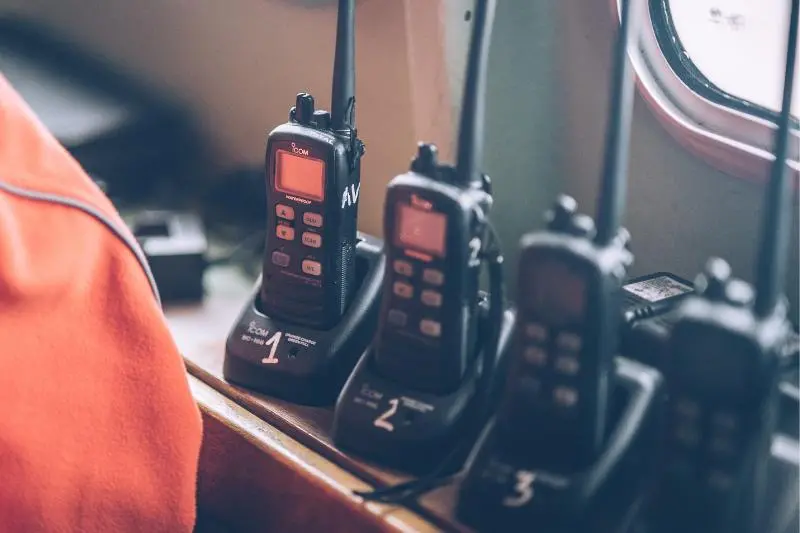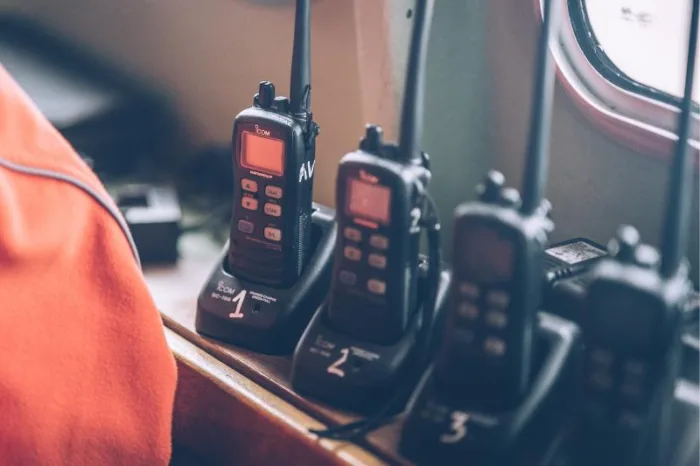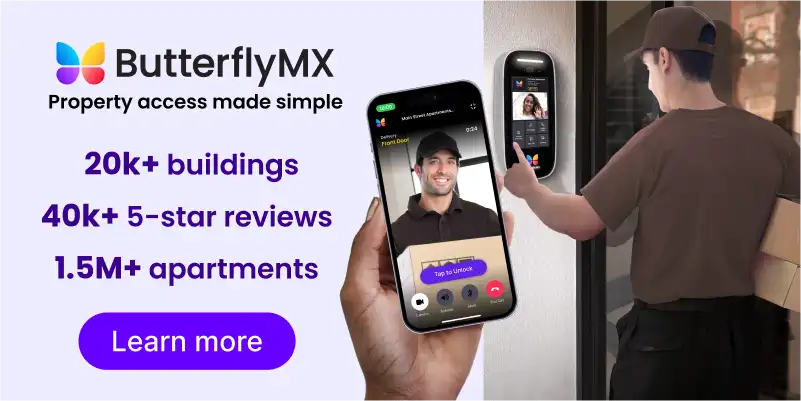Key takeaways
- Push to talk (PTT) is a method of communication in which a user must press and hold a button to activate their microphone and transmit their message.
- PTT is used amongst field workforces because it improves safety, lower costs, and offers clearer audio.
- The construction, hospitality, transportation, and security industries commonly use PTT.

Push to talk (PTT) is a ubiquitous function in numerous technologies, such as cell phones, conferencing software, video games, and intercom systems.
With that said, it’s vital you know what push to talk is and how it works. Additionally, you should learn why people use PTT and how it’s used in real world applications.
This post covers:
- What is push to talk (PTT)?
- How does push to talk work?
- Why do people use push to talk?
- Who uses push to talk?
What is push to talk (PTT)?
Push to talk (PTT) is a mode of communication where an individual must press a button for other people to hear them. When the button or switch is not pressed, the user cannot be heard when speaking.
For example, “walkie-talkies” use push to talk. When a person wishes to communicate with the other, they must press and hold a button to transmit. In addition, this type of PTT requires only one person to talk at a time. So, if the other user wants to respond, they must wait for the other to finish. Otherwise, both individuals would be unable to communicate as they speak over each other.
While PTT is typically used amongst cellular and radio communication devices, the feature is not exclusive to these devices. Rather, PTT has been added to many communication products to boost quality of life.
For instance, Zoom allows users to enable PTT. That way, users can interject during meetings to make comments or ask questions without permanently taking themselves off mute. Unlike walkie-talkies, Zoom and other conferencing software allow push to talk users to speak alongside each other.
What is an example of push to talk?
Aside from the walkie-talkie example mentioned above, another common real-world example of push to talk is a traditional intercom located at an apartment building. Also known as call boxes or apartment buzzers, these devices let guests notify residents of their arrival and speak with them before they’re let inside.
PTT intercoms feature an analog directory of residents. When a visitor approaches, they locate the resident they’re visiting and press the button. The button sends a buzzing sound to the resident’s receiver in their apartment, notifying them of the guest’s arrival.
Using the in-unit hardware, the resident speaks with the guest by holding down the PTT button. Afterward, the guest uses a similar button to respond. Finally, the resident buzzes the guest in via the hardware in their unit.
The newest versions of PTT intercoms use SIP (Session Initiation Protocol) to use the internet to empower tenants to communicate with guests.
What’s the difference between push to talk and VOX?
Push to talk and VOX are often used on two-way radios, but they differ in how the radio is used.
With PTT enabled, you must hold a button to activate the microphone and transmit your voice to others. As for the VOX (voice-operated exchanged), the microphone is always listening. So, you don’t have to press a button to transmit what you say.
How does push to talk work?
Push to talk works by transmitting data on a network (internet, radio waves, cellular, etc.) from one device at a time. This type of transmission is known as half-duplex. Half-duplex transmissions are bi-directional, meaning the data can be sent in either direction but only one direction at a time.
Half-duplex transmissions are what PTT intercoms and walkie-talkies use. Only one individual can speak because data can be sent from one device in one direction. So, once a user is done speaking, the other person can use their device to respond.
On the other hand, some use full duplex, meaning PTT devices can send and receive data simultaneously. In other words, multiple users in a video call can press their PTT button and speak at the same time.
Learn how access control works:
Why do people use push to talk?
People use push to talk or PTT cell phones because of the many advantages they offer, especially for professionals working out in the field.
By using PTT cell phones, field teams can easily and instantly communicate. While some teams use cellular networks, others may use a mobile app.
Regardless of how PTT is enabled, there is no denying the benefits:
- Improves safety. With PTT enabled, field crews can instantly communicate with each other, reducing the downtime of sending and receiving a message. As a result, team members are notified of emergencies faster, which enables them to operate more safely.
- Reduces costs. All modern cell phones have the ability to enable push to talk, which means companies don’t have to invest in costly two-way radios.
- Clearer audio. PTT cell phones have better sound quality and noise-canceling features, ensuring team members can hear what’s coming over the line compared to other two-way communication devices.
- Versatile devices. Unlike two-way radios, smartphones are equipped with internet, text messaging, email, GPS, and more. So, push to talk phones enable crew members to perform everything they need on one device, increasing productivity.
Who uses push to talk?
As hinted at above, push to talk is used by many industries with a field workforce. In addition, other industries have taken advantage of PTT, such as those with remote workforces.
Some real-world use cases of PTT include:
- Construction. Employees working in busy construction sites are prone to injuries, accidents, and other emergency situations. So, PTT is an essential feature when maintaining safety protocols and communicating potential issues.
- Security. Bodyguards, police officers, and other security personnel take advantage of push to talk because they can immediately contact backup or additional emergency services when the time arises. Not to mention, police must keep in contact with dispatchers to receive new orders or request information.
- Hospitality. Hotels, restaurants, and retail stores implement PTT technology so customers’ needs can be met without hindering their experience. For example, instead of cashiers walking to ask for help, they can use the PTT system to request assistance without leaving the register. In turn, the cashier can continue their duties without delaying customers.
- Transportation. Fleet drivers travel constantly, meaning their coverage will vary drastically depending on where they are in the country. So, push to talk technology helps drivers stay connected and reduces downtime that would otherwise be spent contacting and waiting for assistance.







